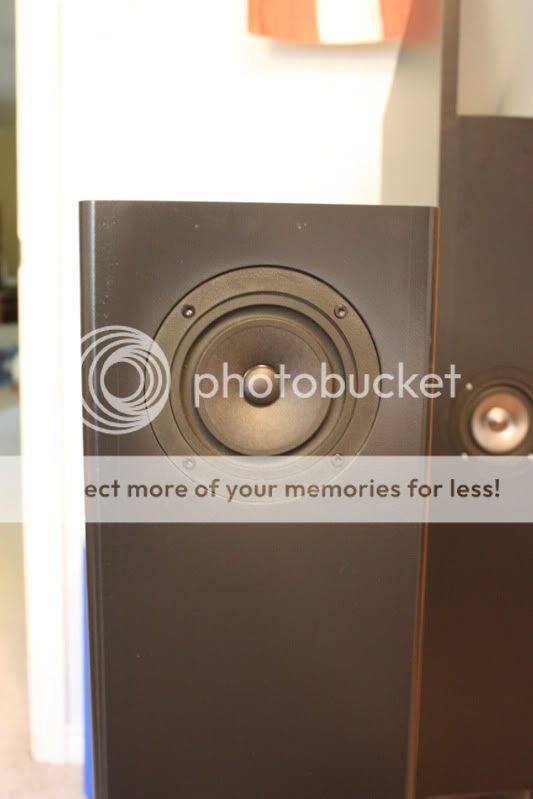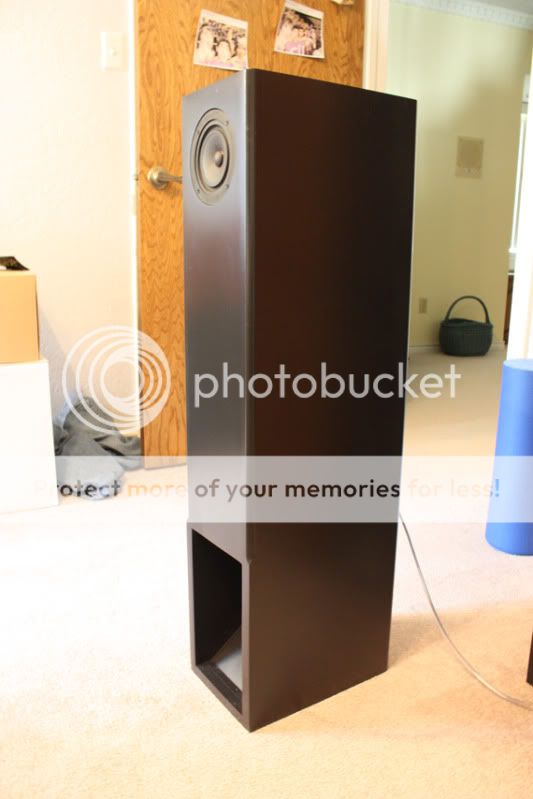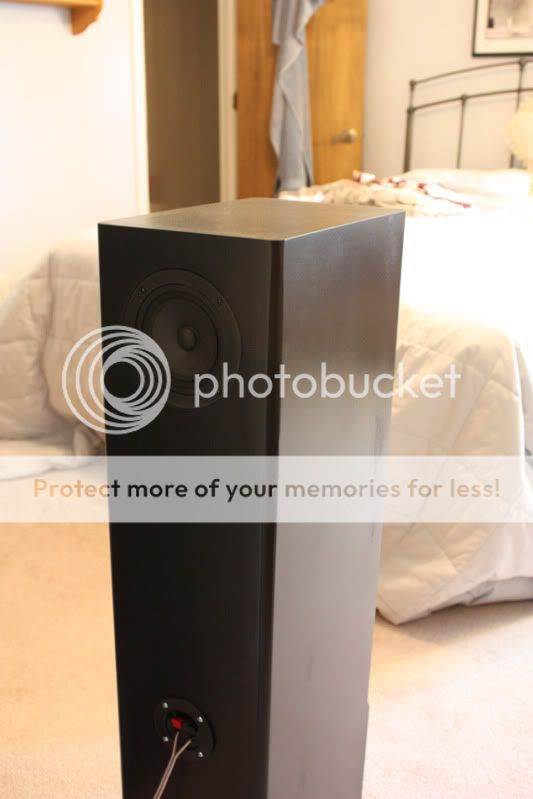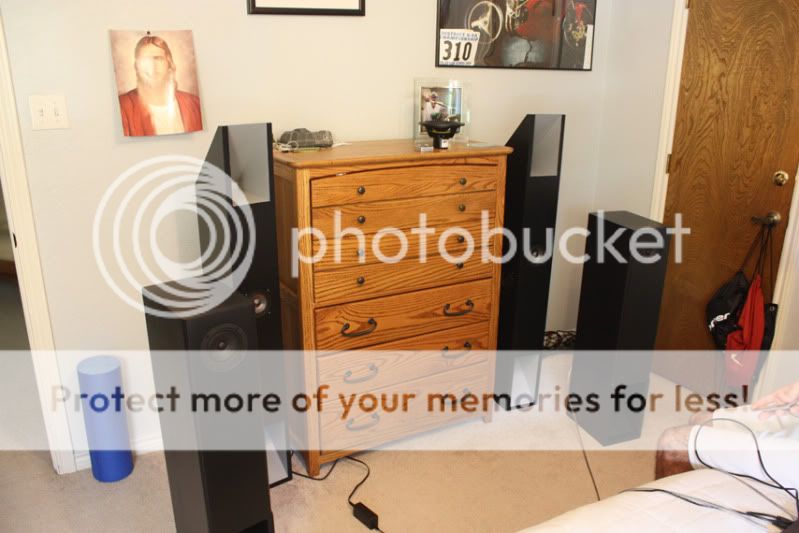As I’m sure most of you know, Bob and Mark have a new driver called the EL70. A very special driver indeed. It’s a paper cone driver that shares the same basket as the CHR-70. Anyways, Bob was so kind as to give me 4 of these for testing so I he could get some initial opinions on the drivers in an actual application. Needless to say, I was excited to try some new toys and build something interesting.
Out of the box, the drivers appear to be very well built, as can be expected from both Mark Audio and CSS products. I was happy to find that the drivers came with mounting hardware since the basket design has a very small countersink for bolts. The supplied foam gasket was also a nice touch.
Scott and Dave have been working on a multitude of designs for this new driver and I was like a kid in a candy shop. I had 4 drivers total and was anxious to get started. I wanted an 8ohm final load and hadn’t built a bipole before so I decided on the Thirlmere design.
The build was fairly easy and went along without incident. After some primer and a few coats of paint these cabinets were looking sharp! (pictures to follow)
Unfortunately, I didn’t have time to break in these drivers before listening to them. The first time I turned them on I honestly wasn’t too pleased with the performance. The sound was vague like I was listening to speakers on the other side of a thin towel. They sounded a bit flat on the top end and the image was very blurry. Most notably, these things had an 18db spike at 300hz! First time I heard it I about fell off the bed.
All that changed when I made the needed changes. The first change that I made was to pull them away from the wall. Bob told me that a bipole needs to be about 3 or more feet from the rear wall to function properly. After I did this the image was dead center and placement was very clear. After I generously stuffed the cabinets the 300hz peak was tamed a bit but just a small bit of the peak remained. I think if I stuffed the cabinet a little more the peak would all but disappear. Dave has suggested a few different options for the driver placement that should take care of the inherent 300hz happy spot
Driver break in was also something that improved the sound and just took time. The top end is still a little lacking in my opinion but a touch of EQ or a super tweeter would yield outstanding results. After a while I found myself bringing the EQ closer and closer to flat. These speakers have a very live sound about them that is hard to explain. I think it’s the fact that they are bipoles but I’m not sure since they are the first pair that I own. After some thought, I imagined each instrument in my room and the sounds they would make. Each sound emanating from a live sound travels in every direction (like the rear wall) and not just at the listener. I think this might be why I think these sound so natural.
These drivers need a bit of break in time as I've stated above. Give them a few hours of play time before making any final judgments. I think you'll find that the sound develops quite a bit. Overall, I'm pretty impressed with these drivers and they get my approval!
Pictures below.....
Out of the box, the drivers appear to be very well built, as can be expected from both Mark Audio and CSS products. I was happy to find that the drivers came with mounting hardware since the basket design has a very small countersink for bolts. The supplied foam gasket was also a nice touch.
Scott and Dave have been working on a multitude of designs for this new driver and I was like a kid in a candy shop. I had 4 drivers total and was anxious to get started. I wanted an 8ohm final load and hadn’t built a bipole before so I decided on the Thirlmere design.
The build was fairly easy and went along without incident. After some primer and a few coats of paint these cabinets were looking sharp! (pictures to follow)
Unfortunately, I didn’t have time to break in these drivers before listening to them. The first time I turned them on I honestly wasn’t too pleased with the performance. The sound was vague like I was listening to speakers on the other side of a thin towel. They sounded a bit flat on the top end and the image was very blurry. Most notably, these things had an 18db spike at 300hz! First time I heard it I about fell off the bed.
All that changed when I made the needed changes. The first change that I made was to pull them away from the wall. Bob told me that a bipole needs to be about 3 or more feet from the rear wall to function properly. After I did this the image was dead center and placement was very clear. After I generously stuffed the cabinets the 300hz peak was tamed a bit but just a small bit of the peak remained. I think if I stuffed the cabinet a little more the peak would all but disappear. Dave has suggested a few different options for the driver placement that should take care of the inherent 300hz happy spot
Driver break in was also something that improved the sound and just took time. The top end is still a little lacking in my opinion but a touch of EQ or a super tweeter would yield outstanding results. After a while I found myself bringing the EQ closer and closer to flat. These speakers have a very live sound about them that is hard to explain. I think it’s the fact that they are bipoles but I’m not sure since they are the first pair that I own. After some thought, I imagined each instrument in my room and the sounds they would make. Each sound emanating from a live sound travels in every direction (like the rear wall) and not just at the listener. I think this might be why I think these sound so natural.
These drivers need a bit of break in time as I've stated above. Give them a few hours of play time before making any final judgments. I think you'll find that the sound develops quite a bit. Overall, I'm pretty impressed with these drivers and they get my approval!
Pictures below.....
Last edited:
We built Thirmere-R (take Steven's speakers and mount the drivers on the "sides") and we to were taken aback by the strong 300 Hz bump. We too cured it with additiona damping... once tamed sonics were very good.
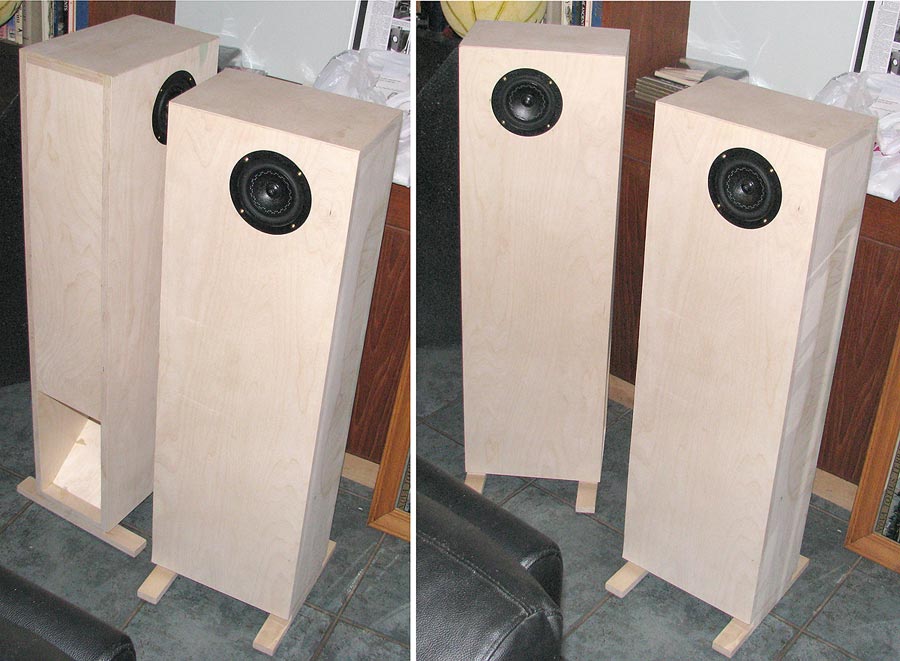
These and the various microTowers really reminded me of how a bipoe can shine.
Scott had been aware of Steven's issue, and when we suffered the same, he dug a bit deeper into the model and found a 290-some Hz resonance product. Higher levels of damping did cure it... the better solution was to use the offset driver technique to kill the resonance at the source. This does leave the driver lower than some would like so in the end we have 4 possible driver positions.
This is an object lesson in the pitfalls of modelling and that nothing beats throwing a proto-type together.
Even experienced designers and builders can miss something or mis-call something. Both these and the microTowers have received revisions based on actual buids (in the case of the microTower we were surprised by some unexpected panel resonances). Experience & modeling tools do help get problem fixes quicker.
There are 3 other designs in Scott's Lake District Series* for the EL70 besides the 2 Thirlmere variations seen here. One is a version of Lotus for the EL70 (it should be pretty solid based on the results from Lotus builds), a smaller single mouth version, and something quite different for Scott.
*(named after the 4 major lake sin Northwest England's Lake District -- Derwent, Thirlmere, Coniston, & Windermere)
dave

These and the various microTowers really reminded me of how a bipoe can shine.
Scott had been aware of Steven's issue, and when we suffered the same, he dug a bit deeper into the model and found a 290-some Hz resonance product. Higher levels of damping did cure it... the better solution was to use the offset driver technique to kill the resonance at the source. This does leave the driver lower than some would like so in the end we have 4 possible driver positions.
This is an object lesson in the pitfalls of modelling and that nothing beats throwing a proto-type together.
Even experienced designers and builders can miss something or mis-call something. Both these and the microTowers have received revisions based on actual buids (in the case of the microTower we were surprised by some unexpected panel resonances). Experience & modeling tools do help get problem fixes quicker.
There are 3 other designs in Scott's Lake District Series* for the EL70 besides the 2 Thirlmere variations seen here. One is a version of Lotus for the EL70 (it should be pretty solid based on the results from Lotus builds), a smaller single mouth version, and something quite different for Scott.
*(named after the 4 major lake sin Northwest England's Lake District -- Derwent, Thirlmere, Coniston, & Windermere)
dave
- Status
- This old topic is closed. If you want to reopen this topic, contact a moderator using the "Report Post" button.
